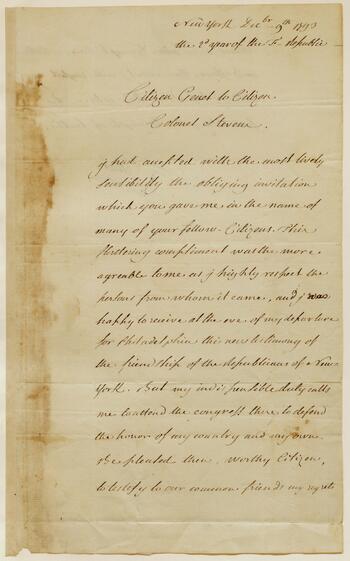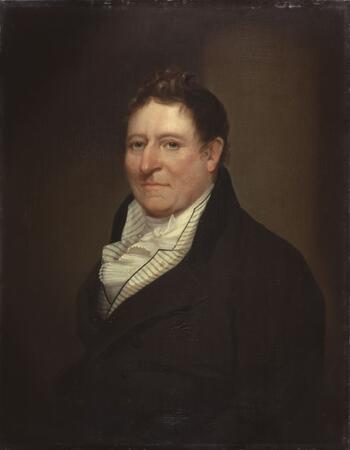European conflicts and regime changes increased the flow of immigrants to New York beginning with the early Dutch settlers who came to New Amsterdam after the New Holland colony in Brazil returned to Portuguese control. Political oppression in France was a particularly significant source of early immigration, including the Walloons of Belgium who arrived in 1640 with the Dutch, the Protestant Huguenots escaping Catholic persecution, and refugees of the French Revolution.
The journey of Edmond-Charles Genêt is one example of emigration fueled by political oppression. In 1792, the French revolutionary government appointed Genêt as ambassador to the United States. He arrived in Charleston, South Carolina and traveled north to Philadelphia, the nation's capital at that time. Along the way, he recruited armed militias to attack Florida (then a possession of Spain, with whom France was at war) and helped launch armed privateers to attack British shipping. Alarmed at this interference, President Washington’s administration demanded that France recall him as ambassador, thereby settling a diplomatic crisis now known as the Citizen Genêt Affair.
At the same time, the revolutionary government that had appointed Genêt had fallen. The new government issued a warrant for his arrest. Knowing that execution awaited him in France, he asked for and received political asylum. In 1794, he married Cornelia Clinton, daughter of New York Governor George Clinton, and settled on a farm in East Greenbush, across the Hudson River from Albany. He remained there until his death in 1834.
Letter from Genêt to Ebenezer Stevens, Dec. 9, 1793, courtesy of the New-York Historical Society
The Ebenezer Stevens Papers consist of the correspondence, military and financial records of Ebenezer Stevens. The collection mainly documents Stevens' tenure as a soldier and officer in the New York State Militia, focusing particularly on daily functions and the fortification of New York Harbor between 1802 and 1814.
Edmond Charles Genêt (1763-1834), courtesy of Albany Institute of History and Art
A portrait of Genêt done around 1810.

